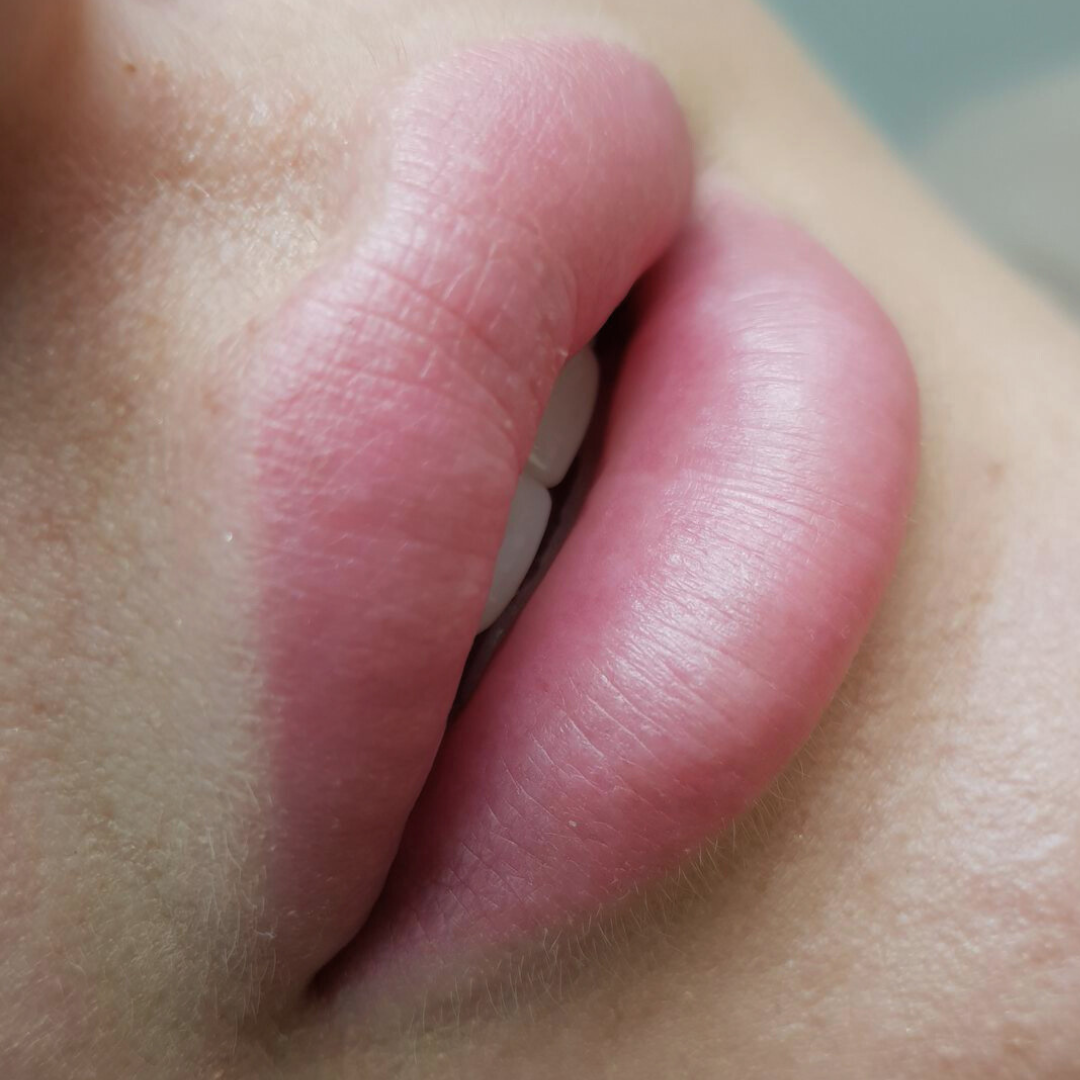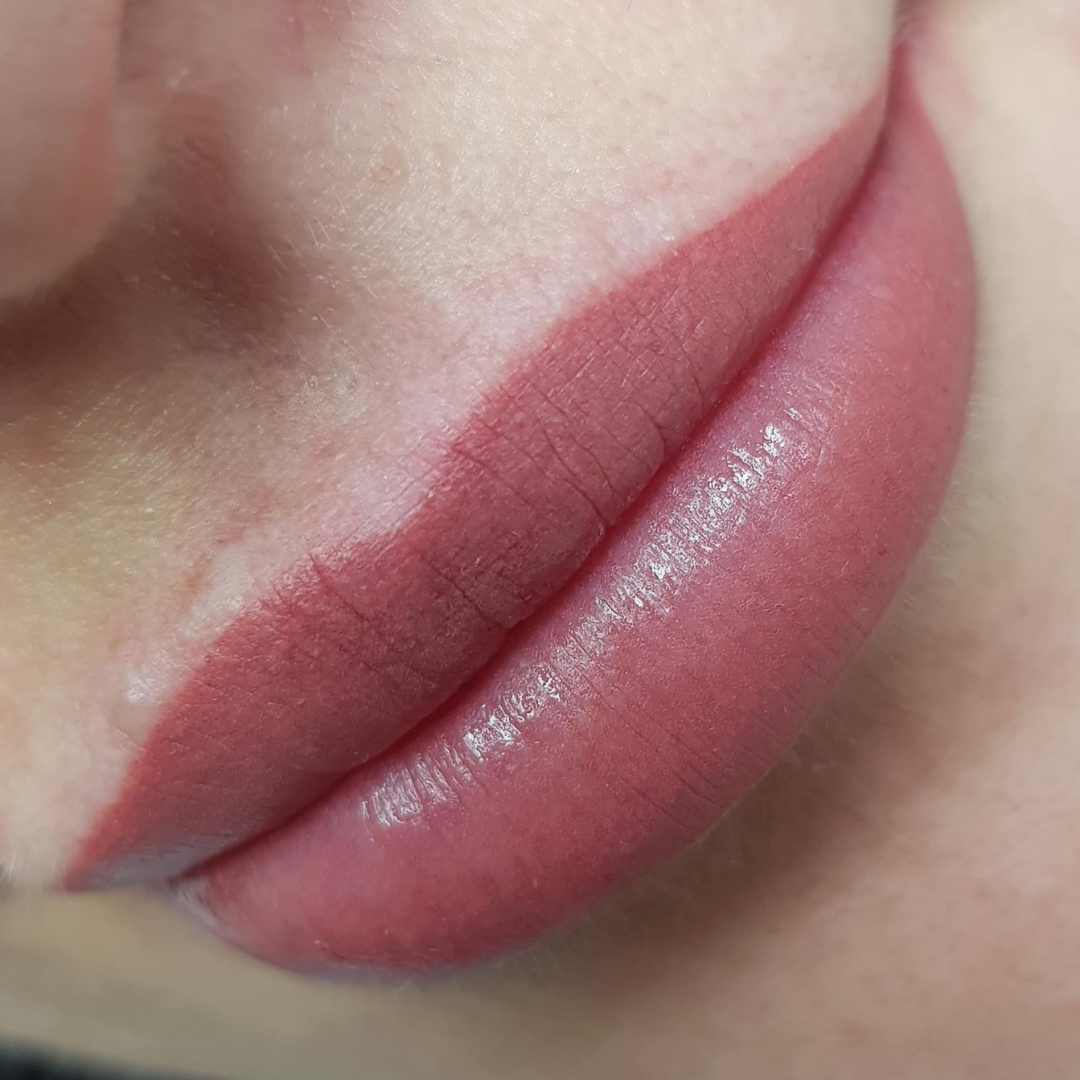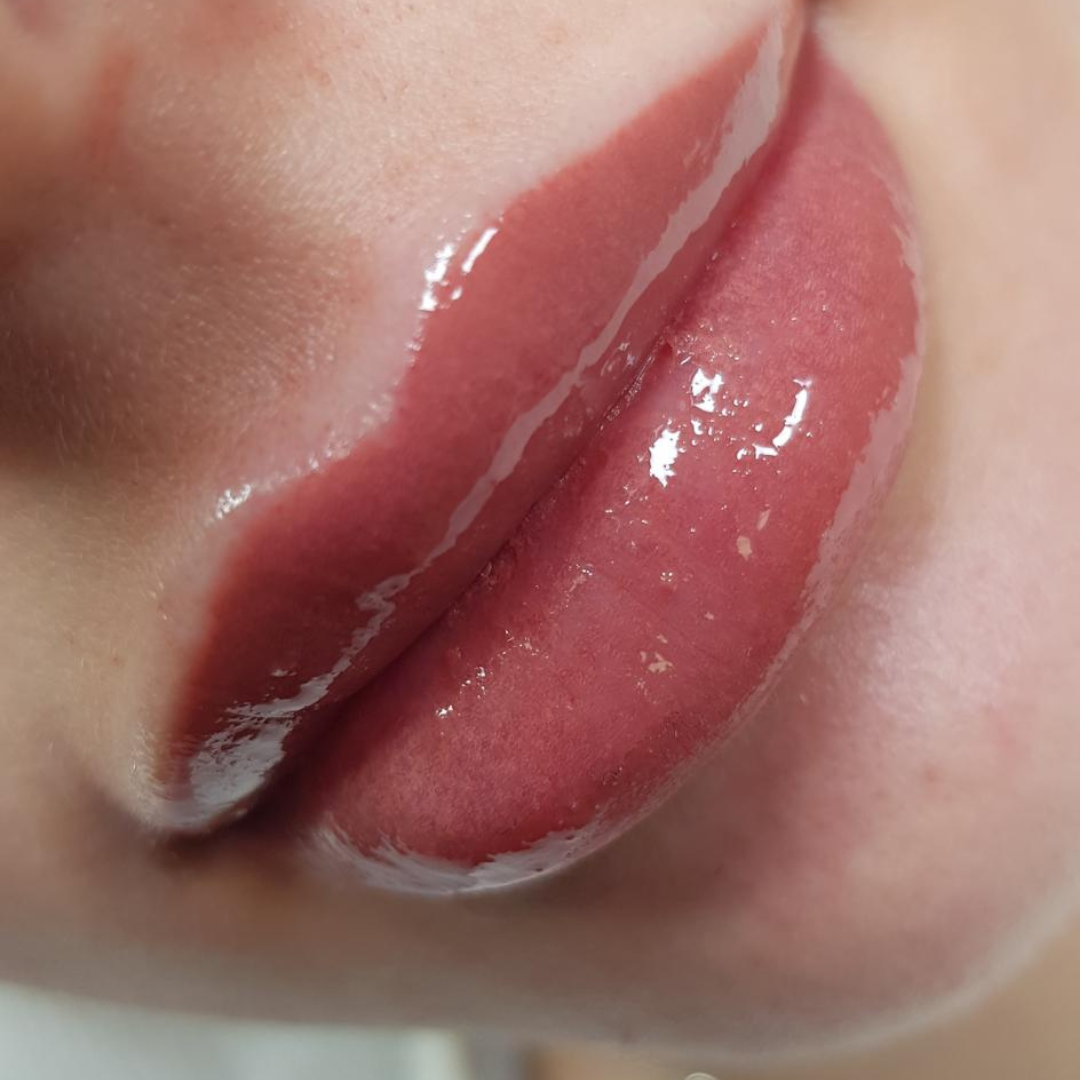
Aquarelle lips
Marta Ziółkowska-Serafin
The Aquarelle technique is a masterful approach to lip pigmentation, where we strive to achieve a subtle effect that highlights the natural beauty of the client's lips.
Our Head Trainer, Marta Ziółkowska-Serafin, reveals the secret behind the technique, which creates delicately transparent and absolutely captivating lips.
A Perfect Technique for Beginners
The Aquarelle Lips technique is one of the most popular and, at the same time, most graceful methods of lip pigmentation. Its greatest advantage is the light, transparent, and natural effect that makes lips look fresh and subtle. The pigment is deposited in an openwork pattern, allowing the natural red color of the lips to remain visible, while the color becomes merely a soft powder. This subtlety makes Aquarelle Lips a great choice for both clients seeking a subtle enhancement and beginner lip artists who want to work with a more forgiving technique.
In classic lip pigmentation techniques, precision is key – strong coverage, a clear contour, and perfect symmetry and line. Aquarelle Lips work differently. Here, the pigment is applied delicately and openwork, meaning the lip lines are not strongly defined. The effects are so powdery and transparent that even significant asymmetries are less noticeable. The effect of powdering the entire lip uniformly, rather than the geometry, is more eye-catching. This is a huge relief for beginner artists, who can introduce the procedure into their practice without fear of their lack of experience immediately becoming apparent in the final result. It's also a great technique to start learning how to work with lips. Thanks to the technique's ease, the healing process is smoother, and clients gain a fresh, natural look—without the "lined" lip effect.
Effects of the Aquarelle Lips Technique
The final effect is best compared to working with paint. Lipstick pigmentation resembles poster paint—strong, opaque, and distinct. Aquarelle lips, on the other hand, are watercolor paints—delicate, transparent, creating a streaky effect of color instead of full, heavy coverage. This allows the pigment to blend with the natural lip tone, creating a powdered red lip effect. Clients appreciate this technique because it allows for gradual color building and maintains a natural look. It's especially effective when clients don't want to immediately opt for intense, geometric pigmentation.
Advantages for Clients
The watercolor technique works well in many situations and meets various client needs. It can recreate the natural red of the lips, subtly even out the tone, or add a subtle definition. It works well for those with fuller lips who don't want to further accentuate them, but rather create an even shade. It's also a great option for women who dream of stronger colors—like classic red—but are concerned about a heavy effect. In watercolor, the pigment doesn't create a full, intense stain, but rather a streak and shade of color that looks natural and light after healing.
What colors to choose for aquarelle lips?
A huge advantage of this technique is the complete freedom in color selection. The artist doesn't have to limit herself to delicate, pastel shades—in practice, she can also work with strong colors, knowing that the final effect will still be subtle and transparent. An intense red or fuchsia, once healed, resembles a light powder of color, rather than a bold lipstick effect. This gives the artist a wide range of experimentation, and the client the confidence that regardless of the pigment chosen, her lips will look fresh and natural.
Working with Asymmetry and More Difficult Cases
One reason linergists value this technique so much is the ability to work with asymmetrical lips. Trying to achieve a strong lip contour often requires going beyond the natural red of the lip, which can emphasize imperfections rather than conceal them. With aquarelle lips, there's no such risk – the transparent, diffused pigment deposition allows for a harmonious balance without overemphasizing problematic areas. With this technique, we work within the lip line, not on the lip border. This is why this technique is called "forgiving" – it doesn't require perfect detail, yet still delivers an aesthetically pleasing and natural result.
Which cartridges work best?
To achieve the desired watercolor lip effect, choosing the right cartridges is crucial. The best solutions are 1RL needles with a gauge of 0.35 and 3RS needles with a gauge of 0.30, which allow for quick and even powdering of the lips. They gently introduce pigment, minimizing the number of times it penetrates the skin and reducing irritation. Clients experience less discomfort after the procedure, and the healing process is much faster. I most often use KWADRON PMU Optima cartridges, which ensure stable and precise work and full control over the even distribution of pigment.
The Aquarelle Lips technique is an ideal solution for linergists who want to expand their offerings with delicate and natural lip pigmentation. This method is especially recommended for beginners, as it is more forgiving and doesn't require as much precision as classic techniques. Clients appreciate its light, breathable effect, the ability to create a more even, even finish.
The subtle color evenness and rapid healing after the procedure. The appropriate selection of cartridges – especially the 1RS/0.35 – makes work comfortable and effective, and the results are stunning both on the day of the procedure and after healing.

Fot. 1 Aquarelle lips (IG: @martaziolkowskapmu)

Fot. 2 Aquarelle lips (IG: @martaziolkowskapmu)
--------------------------------------------------------------------------------------------------------
Marta Ziółkowska-Serafin
COSMETOLOGIST | PMU AND MEDICAL PIGMENTATION TRAINER | PMU LECTURER | SAPU GRADUATE
As the Head Trainer of Kwadron PMU, Marta is the originator of numerous innovative solutions in the design and refinement of permanent makeup equipment. She is also the creator of her own techniques. She has served as a juror for numerous PMU championships in Poland and Europe. She is a lecturer and author of expert articles in industry magazines. She has appeared on TV programs and webinars as a PMU expert. She holds international Make Up Pro Artist and Beauty Metamorphosis certificates.
She is a member of the KINTSUGI Foundation, where, together with her doctor, she helps patients with facial deformities.
